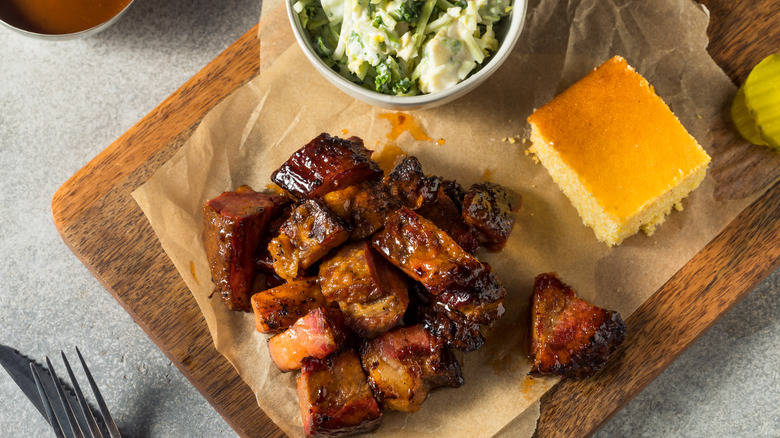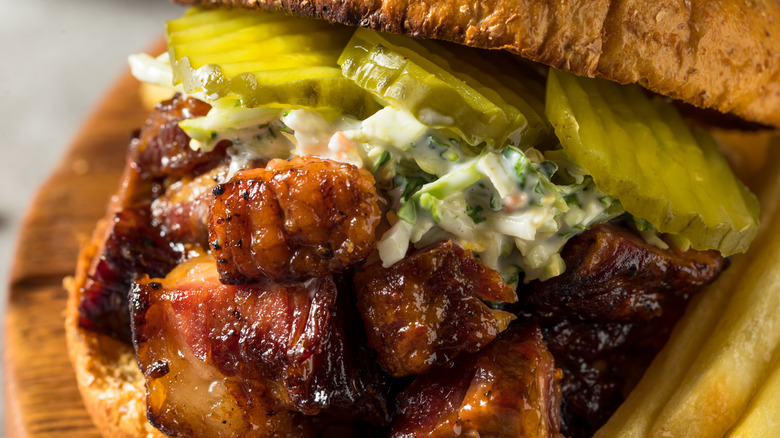Burnt Ends Weren't Always The Coveted Barbecue Staple They Are Today
It's often the case that major food trends were happy accidents from humble beginnings. Such is the case with burnt ends, the now coveted barbecue staple that appears on menus across all the famous barbecue regions. Of course, burnt ends aren't new — they're traditionally the crusty, charred ends of a smoked brisket that cook faster than the middle. Restaurants used to view them as undesirable scraps and discard them accordingly. The food's present popularity stems from an ingenious afterthought in a historic barbecue joint.
The shift in how people perceived burnt ends can be traced to Kansas City, Missouri, in the late 1940s and early 1950s. Around that time, restaurant owner, pit master, and barbecue chef Arthur Bryant of the still-operating Arthur Bryant's Barbecue decided not to waste the charred butts of his smoked briskets. Instead of throwing the crispy burnt butts of the brisket into the trash, he decided to chop them up and serve them to customers while they waited in line for their orders. The greasy, smoky, crunchy morsels of meat were an instant hit, and word of this meaty bonus spread fast.
Burnt ends were the best kept secret at Arthur Bryant's Barbecue until a 1970s food review from a well-known critic launched them into the national limelight. Fellow Kansas City barbecue joints followed suit, and burnt ends soon became a menu item that customers enthusiastically bought as a decadent prelude to their brisket sandwich or rib dinner.
Modern popularity and burnt end variations
Brisket burnt ends are undoubtedly a Kansas City specialty, but the concept has spread to other southern barbecue traditions from Texas to Tennessee. However, burnt ends aren't just the leftover brisket scraps, but have come to encompass pork products as well. In fact, you might be more likely to see ones made of pork outside of Kansas City. Memphis restaurants toss pork belly burnt ends in honey or maple glazes for a sweet, savory, and smoky appetizer. The food has even crossed over from appetizer to main event, featured as the primary protein in sandwiches and tacos or as an upgrade to side dishes like macaroni and cheese or baked beans.
Some recipes have also popped up that skip the smoker altogether and entail chopping up an entire pork belly into bite-sized chunks, coating them with store-bought barbecue sauce, and cooking them into burnt end bites in the oven or air fryer. Burnt ends are such a hot commodity, that recipes for budget-friendly "poor man's" burnt ends swap brisket for cheaper chuck roast.

